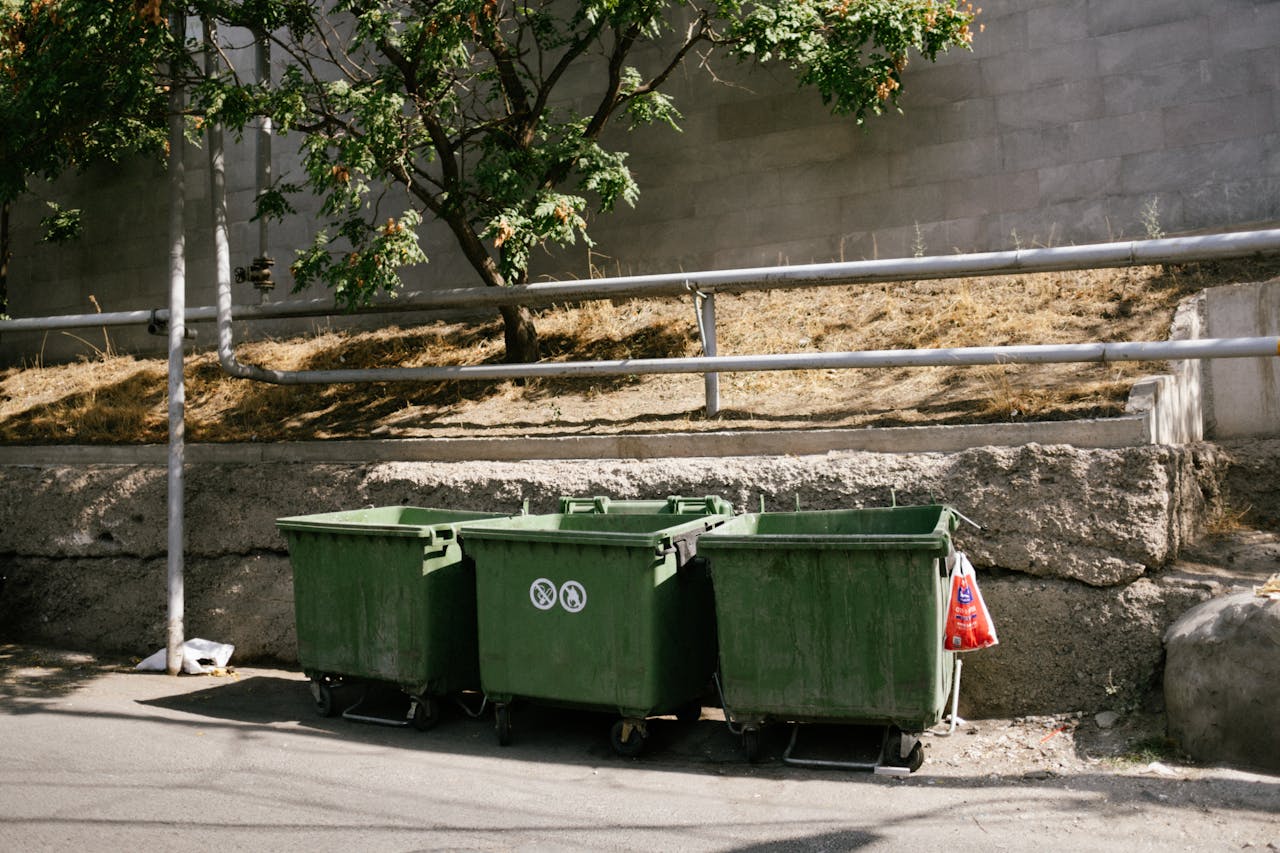Numerous environmental and waste management services have taken the place of the traditional garbage truck. By employing new and creative methods to enhance sustainability, boost productivity, cut expenses, and optimize environmental effect, the industry has completely changed the way it operates.
Technology is changing the way we manage waste and how the planet is kept clean. From waste-management software, which optimizes routes, to automated sorting systems using AI. Data analytics can provide insight into waste streams, recycling habits and compliance issues. field management solutions also improve the way technicians service waste sites. As we strive to create a more sustainable future, the role of technology is critical in environmental services and waste disposal.
Waste collection becomes more intelligent with the use of route optimization software.
The route optimization software revolutionized the way waste collection services are operated. GPS tracking of garbage trucks gives real-time information on the location and speed. This allows companies to optimize routes. Some systems consider traffic conditions and road conditions in determining the best route.
Waste collectors can spend more time collecting trash if they have a route optimized. The tools can help reduce fuel consumption and environmental impact while allowing workers to cover more sites each day. Most route optimization tools provide an estimated time of arrival, which allows for better resource management and time tracking.
Some systems take it a step farther by tracking waste volume and type at each pick-up location. The software predicts the amount of space needed for each pickup by analyzing previous data. The software will then give the driver the best order to collect at each location. The truck will not fill up on its way to the facility, so there are fewer trips.
Route Optimization is an excellent example of how technology can improve sustainability and cost effectiveness in waste management. Advanced data analysis and real time monitoring allows for leaner, greener operations. The upfront cost is high, but the long-term benefits in terms of time, fuel and labor are worth it. The future is eco-friendly, automated, and optimized.
Software for field service management to oversee a mobile workforce
Field Service Management (FSM), software, has revolutionized waste and environmental service. It allows companies to manage mobile workers in the field efficiently. It’s time to move digital if your team still relies on paper maps and forms.
FSM solutions automate scheduling and dispatching, based on factors such as location, skill, and availability. FSM allows you to send the right person at the right time. On-site field workers have access to customer records, details of the job, and lists of required parts on their app. They can also capture updates in real time, notes, signatures and photos.
All details are synced with the central system upon completion of the job. The workers do not need to travel back and forth to the office for paperwork. They can instead save money, time and effort and reduce operational costs. Keep digital records to stay compliant and accurate.
The data collected by FSM software can be used to provide valuable insights via reporting and analytics. Analyzing things like job durations, travel times, parts used and more will help optimize operations and reduce costs. Trends can indicate areas for training in skills or reallocation of resources.
Although the transition from analog to digital can be challenging, FSM solutions with a mobile workforce will pay off in the end. It is important to stay on top of technology in order to maintain efficiency, be sustainable, and remain competitive. There is no going back. The future belongs to digital technology.
Big Data and Analytics
The environmental services and waste-management sectors are being revolutionized by big data and analytics. By leveraging the power of large datasets, organisations can gain valuable insight into various aspects including waste generation patterns. Data-driven waste management is more cost-effective, efficient and environmentally friendly.
Waste diversion and recycling improved
You can use recycling and waste diversion to reduce the amount of trash ending up in landfills or incinerators. These programs use data and analytics to inform decisions about the collection and processing of waste. Sensors mounted on bins and garbage trucks can monitor the level of waste in real time, which allows for the optimization and reduction of unnecessary trips. These technologies allow you to identify businesses or areas that produce more waste. This allows for targeted education campaigns to promote proper waste disposal.
You can analyze waste and recycling trends over time to understand how external influences, such as events, seasons or economic changes affect service operations. The use of predictive analytics allows you to predict future waste volumes and ensure that staffing levels and equipment are adequate to deal with anticipated changes. These data-driven decision contribute to higher rates of waste diversion and cost savings.
The strategic use of data and analytics in waste and recycling is driving progress. More data will be available as more devices are connected online. This information can then be used to optimize these vital environmental services. Big data and analytics are key to a company’s ability to be more efficient and sustainable in the future.
IoT and sensor technology’s place in contemporary solid waste management
The waste management industry has undergone a major revolution, driven by smart sensors and data analytics, as well as the Internet of Things (IoT). IoT integration in waste management has revolutionized the industry and is propelling it to a greener, more efficient, and smarter future. IoT enabled waste bins with ultrasonic sensor provide real-time data on the level of filling, allowing waste collectors and waste collection companies to optimize routes, eliminate unnecessary pickups and reduce fuel consumption and costs.
RFID tags are used to track waste materials. They provide valuable insight into waste streams, and help companies achieve their sustainability goals. IoT tracking and IoT also improve fleet visibility, empowering waste management firms to optimize their operations. GPS tracking allows for real-time vehicle location, which helps to reduce idle time and plan routes efficiently. Engine diagnostics can help identify potential problems before they become a breakdown, which reduces downtime and costs.
Emerging trends in waste management technology
Waste management is evolving constantly with the advancements in technology. Several emerging trends are shaping the future of how we handle and process waste in an environmentally-friendly manner.
Automation and Smart Waste Systems
Smart waste collection systems are being implemented by cities and waste management companies. These systems use sensors to monitor the level of waste, recycling and compost in bins. The system will send an alert when a bin reaches its maximum capacity. The system reduces fuel consumption and greenhouse gas emissions because fewer trips are made to empty bins or those that are partially full.
Some companies test automated waste collection, where self-driving trucks pick up bins. These self-driving vehicles could reduce costs while also addressing labor shortages. Sorting systems in waste treatment facilities are improving their ability to identify and separate different materials.
Cloud-Based Solutions and Data Analytics
Data analytics and cloud computing are being used by waste management companies to gain insight, predict trends and optimize their operations. Companies can improve their efficiency and sustainability by analyzing data about waste generation, collection routes and vehicle maintenance.
Cloud-based software for field service management gives companies an integrated system to schedule pick ups, plan routes and track vehicles. This simplifies operations and gives a unified view of all activities.
Zero Waste and Diversion as the Focus
Waste diversion programs such as recycling, composting and waste-to energy are gaining in popularity. Some cities and businesses aim to “zero-waste,” which means that little or no waste will be sent to landfills. Composting green waste and food scraps is becoming more common. Waste-to energy facilities turn waste into renewable sources of energy like biodiesel and electricity.
The future of the waste industry is green. Automation, data analytics and cloud computing, as well as waste diversion programs, have enabled a sustainable model of how to manage society’s waste. Although the innovations are complex, their goal is simple: Reduce, Reuse and Recycling.
Final Thoughts
Although there are challenges to implementing new systems and solutions, the benefits of increased efficiency, cost savings and improved environmental impact as well as better service make the investment worthwhile. Companies that embrace innovation and technology will be the ones to thrive and lead in the transformation of these industries. The technology has revolutionized waste and environmental management services in many ways. Technology is paving the way for a better future. It streamlines operations, automates processes, enables data-driven decisions and powers sustainability initiatives. Change is rapid and the opportunities are endless. Take advantage of technology to help your business succeed. You can transform challenges into success with the help of tools like waste-management software.




